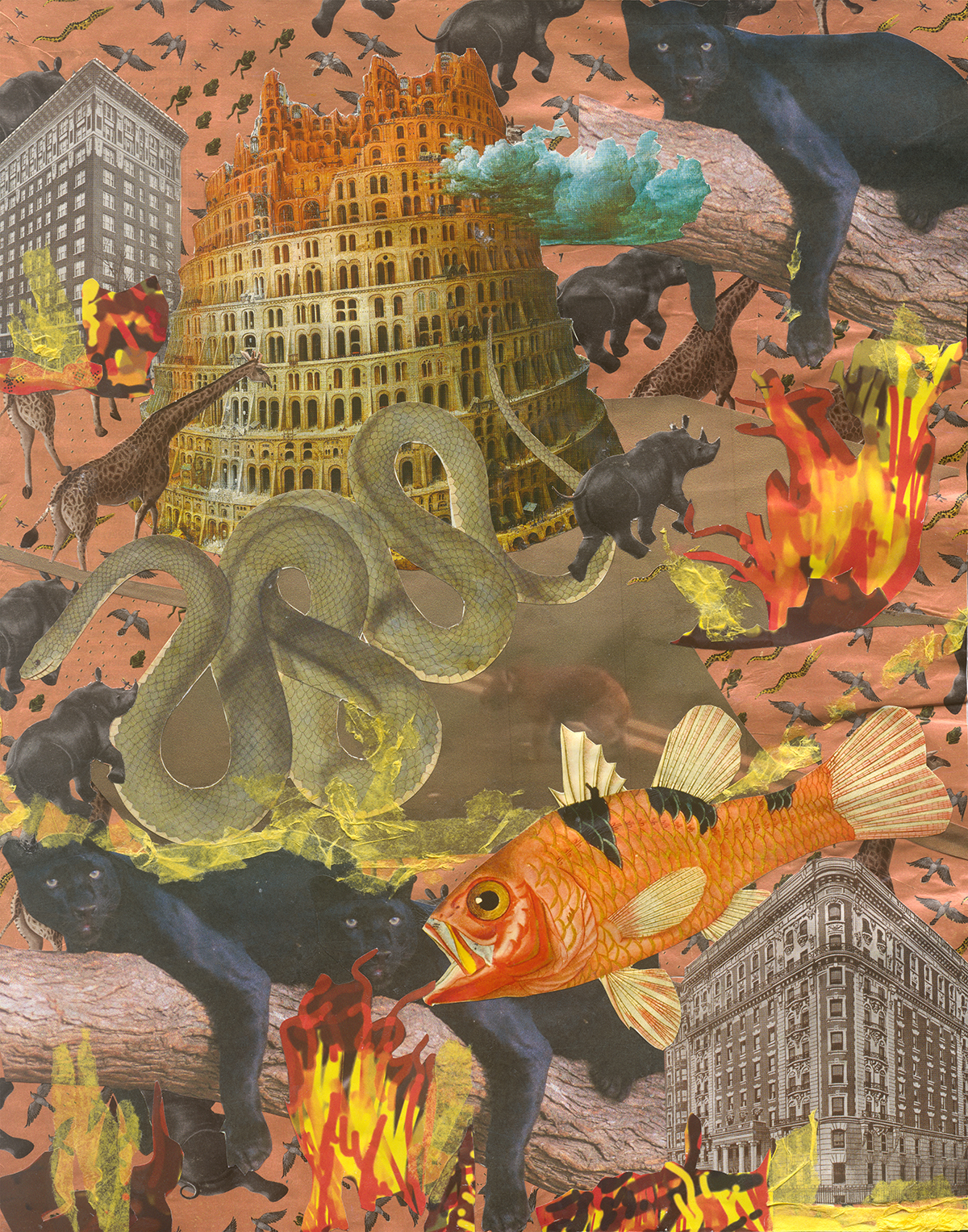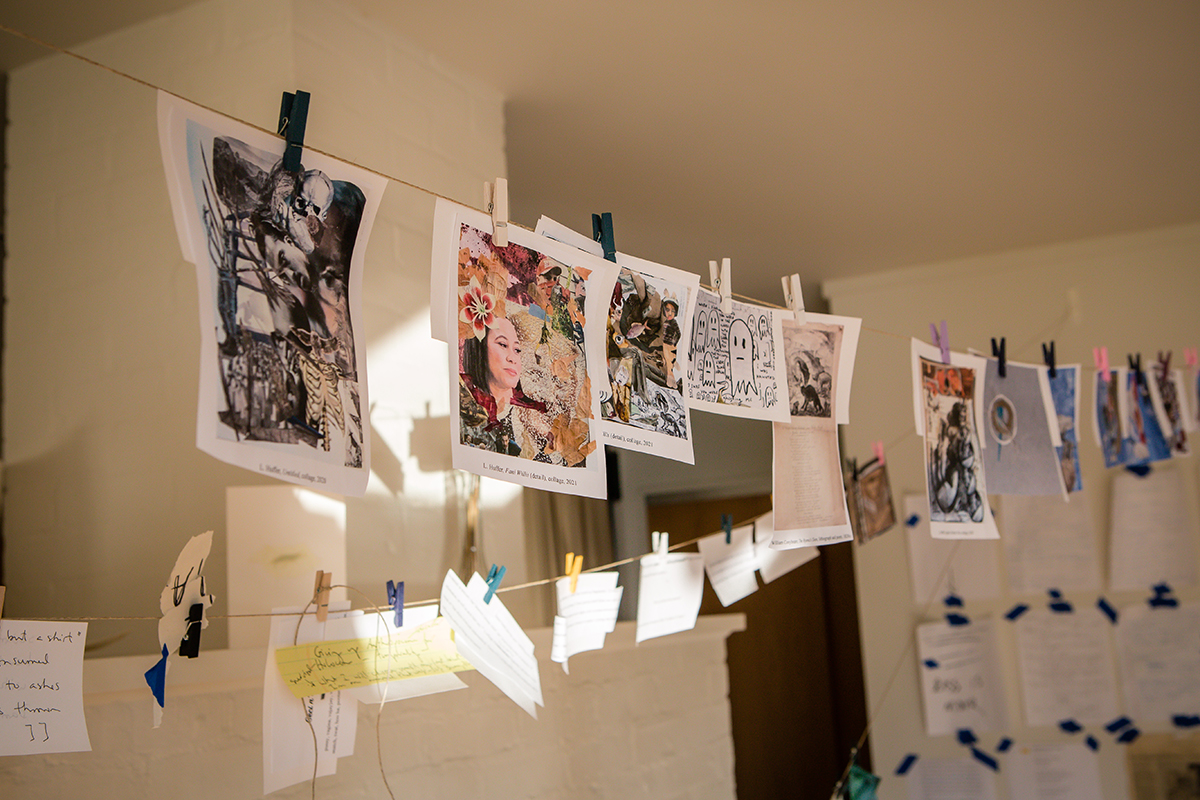Making art can be a balm for the troubled soul. Lynne Huffer, Emory professor of philosophy, discovered this during the stress and turmoil of the COVID-19 pandemic. That’s when she began “instinctively cutting things up and gluing them back together,” she says. “Somehow, that was really soothing for me.”
For Huffer, who has no formal artistic training, collage is another way of considering topics like the work of French philosopher Michel Foucault, who wrote about the fragmented nature of the historic archive, and the surviving fragments of the work of ancient Greek poet Sappho.
“I’m interested in the juxtaposition of fragments that we see in collage,” Huffer says. “There’s something about thinking-as-juxtaposition — rather than a continuous narrative or an argument. A lot of people would say, ‘That’s bad thinking,’ you know, ‘it's associative.’ But thinking through juxtaposition is poetic.”
Huffer explored these ideas and others in “These Survivals: Autobiography of an Extinction,” a book of poetic and visual collage published by Duke University Press in May. And she continues collaging.
The Michael C. Carlos Museum is featuring a three-dimensional collaborative collage installation by Huffer in its Tate Room from Wednesday, Nov. 12, through Friday, Nov. 14.
During Huffer’s open studio times, visitors are encouraged to sit at communal tables and create collages of their own, using materials provided by the museum. Visitors can take their creations home or add them to Huffer’s installation.
The open studios for the general public take place at various times, and entry is included with general admission. Huffer will lead a free open studio just for Emory students on Friday, Nov. 14, from 1-4 p.m.
She will also teach a workshop for adults on Thursday, Nov. 13, from 5:30-8:30 p.m. Participants will create collages and turn them into “seed books” to generate creative ideas. Advance registration is required for the workshop, which costs $30 for museum members and $40 for nonmembers.
In the following Q&A, Huffer discusses what draws her to collage and why, in this digital age, sitting down with paste and scissors is a worthwhile activity.

“I love detritus,” says Huffer, explaining the array of materials in her home studio.
Where does your interest in fragments of text, images and objects come from? Are you a collector?
Lynne Huffer: I do collect things. I love detritus. Onion skins and dried plants, which I use in my collages. I have bones from the woods, which I’ll take home and clean and bleach — so I have this table with a heron skull and a possum skull. I also have some bones that my students gave me because they know that I like bones. I have fossils, too. If you looked at this space in my home, it’s just bones and rocks, but to me, each item has special meaning.
What do you most enjoy about making collages?
Huffer: There’s something contemplative about the process, because I have to sift through these materials; it’s not efficient. It’s not going to happen with the click of a mouse. I like that it feels out of time, in a way. I love that my fingers get sticky with glue, the different textures, the different layers. All of that feels very contemplative, but also very grounded, right?
I bring collage into all my classes. I have my students make collages, and at first most of them want to make digital collages, but I insist they make analog collages. And it becomes a shared practice, which is really valuable for me and for my students.
There’s something very embodied in this, too. Many of my students grew up with screens in their hands, screens that reflect them back to themselves, but through this mediated digital world. What kind of an interiority does that create? I’m not anti-technology, but when we’re in the digital world, we’re not anywhere.
I’m offering them just this little sliver of time out of their busy day where they’re trying something different. I think there’s something about the materiality of holding a pencil, holding a pen, cutting something with scissors, flipping through magazines, that makes us feel more present to ourselves.

“I’m interested in the juxtaposition we see in collage,” says Huffer, who created “Aflame 2021,” pictured here.
I wonder if part of the appeal of collage is also its accessibility.
Huffer: Yes! Collage is both a genuine art form and something so democratic. That’s what I love about it. You don’t have to know how to draw or paint, you don’t need a toolbox full of fancy equipment and you don’t need digital expertise. All you need is glue and scissors — and you don’t even need scissors, really, since some of the most beautiful collages are made by tearing.
And honestly, one of the appeals of collage, for me, is that it is an art form for children. I love accessing that childlike wonder and immersion in what we’re doing. “Losing ourselves” in it, so to speak, as children do, not worrying about what others think or whether or not it’s “good,” is the most glorious state to be in. I try to cultivate this state in myself and in those who participate in my workshops and classes. And I’m just super excited to share that with other people at the Carlos.
All photos provided by Lynne Huffer

